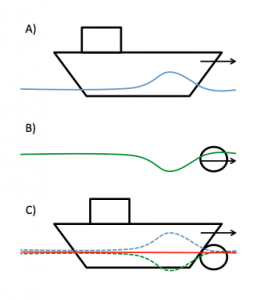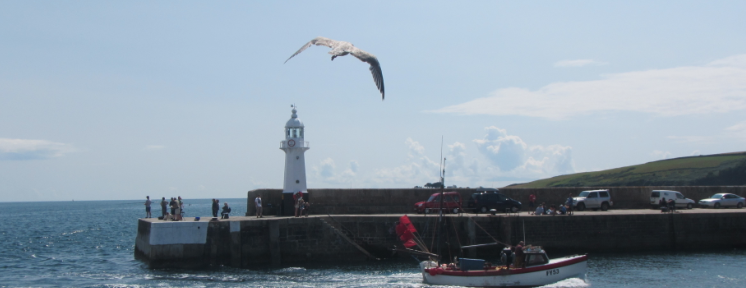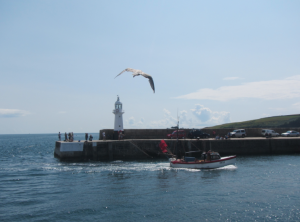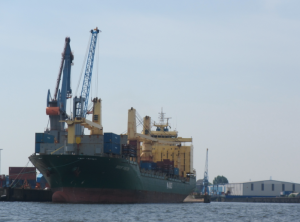My dear ship builder and naval architect friends, if this post seems horribly oversimplified to you, you are very welcome to write a guest post and go into this topic in as much detail as you feel is needed :-)
So now my dear non-ship builder and non-naval architect friends, here is a post about ships. And be warned: it is very simplified. I have been taking pictures with a post on this topic in my mind for more than a year now, so here we go:
Have you ever noticed the bow waves that ships make?
It’s pretty easy to imagine that a lot of energy is lost generating the wave field around the ship. Energy that could be used on propulsion or on something completely else instead.

Energy wasted on creating an enormous wave field.
So what if the solution to this problem was really simple? As simple as a ball right in front of a ship’s bow, just below the water line? That would produce a wave field as seen below.

Wave field created by a submerged buoy in a current.
And indeed that is what you see when you look at big container ships like the one on the picture below.
So why would this work? In the picture below, I’ve sketched an over-simplified explanation. In A) you see a ship moving from left to right, and the bow wave that is created by the ship moving through the water. Then in B) you see the wave field created by a submerged ball (compare to the ball in the third figure in this post – that’s not so unrealistic!). And then in C), you see the water levels from A and B added together: They cancel each other out (pretty much). Voila!

Sketch explaining how a bulbous bow cancels out the wave field created by a conventionally shaped bow.
Of course, it is not quite that easy in reality. Having a bulbous bow is only an advantage if you are planning on driving with a set speed most of the time, since the wave field created by both the bow and the bulb depend on the ship’s speed, and both have to be tuned for a specific speed. And you will still lose energy to the wave field that you are creating as you are moving your ship through the water, but not as much as before. But still, since you see bulbous bows on most large ships these days, it seems to be working quite well, and, according to Wikipedia, yields fuel savings of the order of 10-15% for any given speed. Not too bad!



Pingback: Wave watching on Kiel Canal: Bulbous bows and how they shape the wave field | Mirjam S. Glessmer